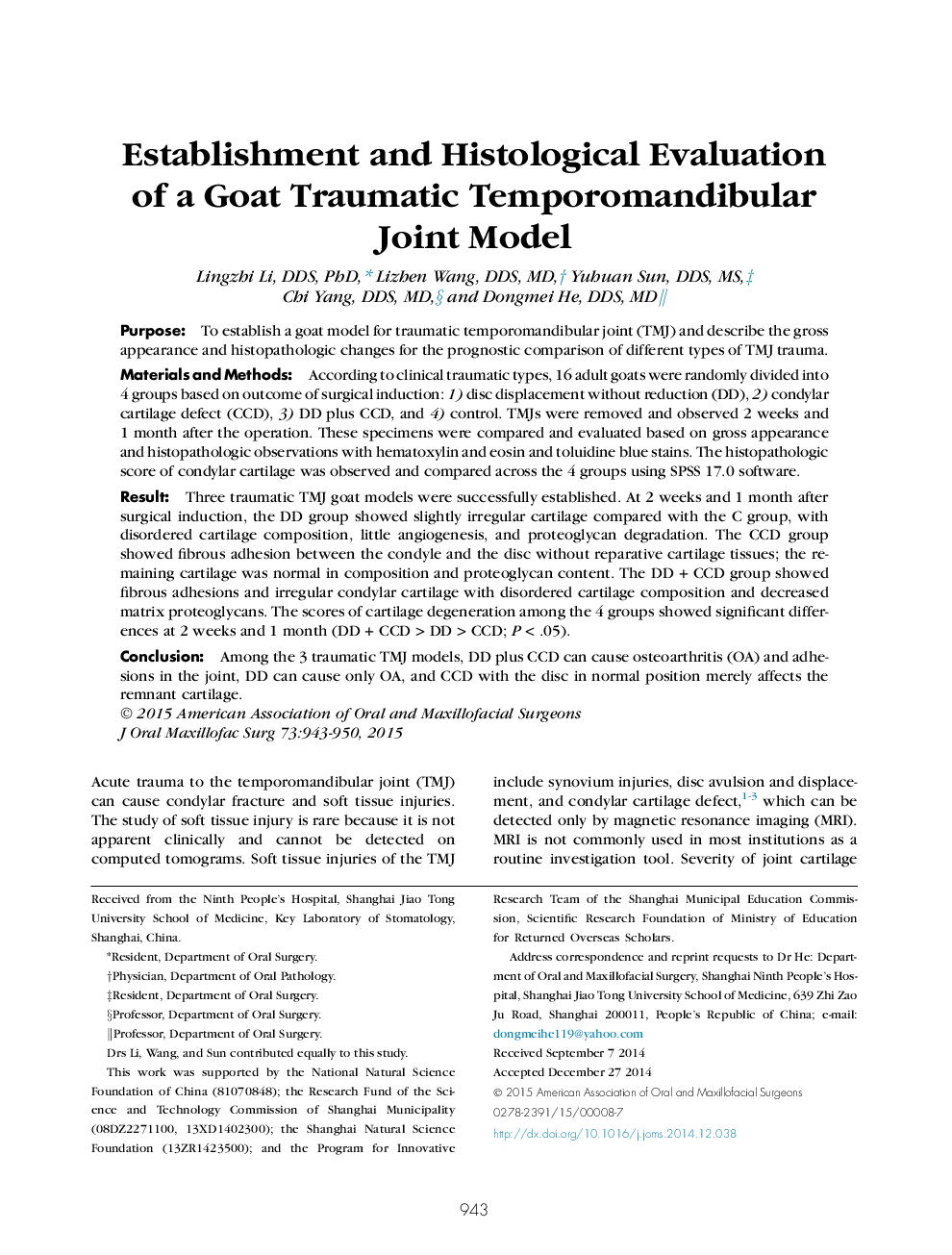| Article ID | Journal | Published Year | Pages | File Type |
|---|---|---|---|---|
| 3152478 | Journal of Oral and Maxillofacial Surgery | 2015 | 8 Pages |
PurposeTo establish a goat model for traumatic temporomandibular joint (TMJ) and describe the gross appearance and histopathologic changes for the prognostic comparison of different types of TMJ trauma.Materials and MethodsAccording to clinical traumatic types, 16 adult goats were randomly divided into 4 groups based on outcome of surgical induction: 1) disc displacement without reduction (DD), 2) condylar cartilage defect (CCD), 3) DD plus CCD, and 4) control. TMJs were removed and observed 2 weeks and 1 month after the operation. These specimens were compared and evaluated based on gross appearance and histopathologic observations with hematoxylin and eosin and toluidine blue stains. The histopathologic score of condylar cartilage was observed and compared across the 4 groups using SPSS 17.0 software.ResultThree traumatic TMJ goat models were successfully established. At 2 weeks and 1 month after surgical induction, the DD group showed slightly irregular cartilage compared with the C group, with disordered cartilage composition, little angiogenesis, and proteoglycan degradation. The CCD group showed fibrous adhesion between the condyle and the disc without reparative cartilage tissues; the remaining cartilage was normal in composition and proteoglycan content. The DD + CCD group showed fibrous adhesions and irregular condylar cartilage with disordered cartilage composition and decreased matrix proteoglycans. The scores of cartilage degeneration among the 4 groups showed significant differences at 2 weeks and 1 month (DD + CCD > DD > CCD; P < .05).ConclusionAmong the 3 traumatic TMJ models, DD plus CCD can cause osteoarthritis (OA) and adhesions in the joint, DD can cause only OA, and CCD with the disc in normal position merely affects the remnant cartilage.
